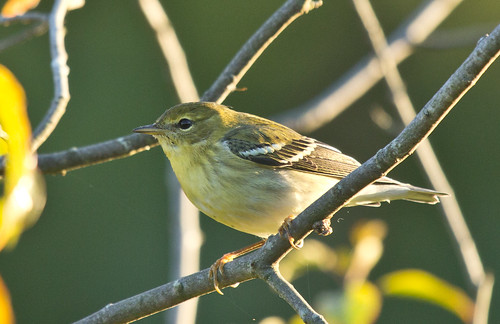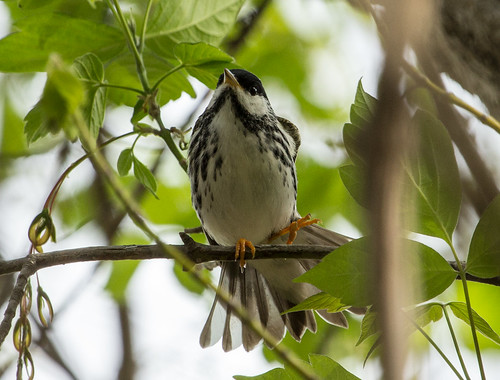
(These are the remarks I'll make at the protest on September 27 about the bird-killing design for the proposed Vikings stadium.)
For many years, I was a wildlife rehabilitator, licensed by the US Fish and Wildlife Service and the Minnesota DNR to help injured songbirds. A disturbing number of the birds I received in spring and fall were suffering from head and spinal trauma from hitting windows. As I held birds that weighed barely a third of an ounce—you could mail three warblers with a single postage stamp—I could feel how heartbreakingly fragile they are, and also how despite their tiny size they embody some of the most thrilling elements of football: athleticism, endurance, and the physical and mental strength to overcome overwhelming odds.

I’d look at a tiny Blackpoll Warbler in my hand and think about how every single Blackpoll Warbler ever seen in Minnesota during fall had come down here from its birthplace in the far reaches of Canada and Alaska—many had already traveled well over a thousand miles, and assuming that this one didn’t get killed, it would make its way to the Atlantic coast and then strike out over the ocean, averaging over 1800 miles on a non-stop flight to South America. Yes—non-stop, beating those tiny wings millions of times over treacherous waters without rest or food or the encouragement of fans or a coach, all the way to South America.
These birds are tiny but sturdy—those who aren’t gobbled by predators or killed in tragic collisions can lead surprisingly long lives. One of those Blackpoll Warblers banded as an adult in Alaska was retrapped, alive, when he was over 8 years old—his tiny little body had lasted more than twice as long as a typical NFL player’s career, and he was still going strong.
These little birds have pluck and guts, but no protective gear. They lead lives independent of us people—never asking for a dime, virtually never even visiting a feeding station or a birdbath. All they ask is that we let them go their way. That is not too much to ask, is it?
We didn’t used to appreciate the dangers of glass to birds. One of my friends, ornithologist Daniel Klem of Muhlenberg College in Pennsylvania, started researching the issue at the start of his career in the 1970s, and everything he has learned about bird-window collisions has made it abundantly clear that this is a most significant peril for migrating birds. For decades his was the only voice out there talking about the dangers of glass, but in the past decade more and more ornithologists have done the research and affirmed just how treacherous glass is. We can’t do very much at all about all the glass in existing structures, which is known to kill on the order of a billion birds a year. But now that we know better, why are we even considering sticking 200,000 square feet of shiny new glass right smack in the heart of a critical migration path?
The Twin Cities has a long history of being a safe haven for birds, with our Minnesota Valley National Wildlife Refuge and our world-class bird rescue facilities—the Raptor Center and the Wildlife Rehabilitation Center. People look to us to solve bird problems, not to create them.
I can’t imagine that any of the Vikings players or their thousands of fans want the new stadium to kill birds. I’m sure none of the Minnesota taxpayers footing half the bill for the stadium want it to kill birds. If this is an issue of money, the cost of using bird-safe glass is insignificant compared to the cost of the stadium itself. I don’t understand how it can be an issue of esthetics. There are plenty of places to see the Twin Cities skyline. When people go into the stadium, shouldn’t the point to see the Vikings? How exactly do the thuds of crashing birds and the sight of dead and dying creatures littering the ground around the stadium fit into any reasonable person’s sense of aesthetics?
This issue is as clear as bird-killing glass. Just say no.
